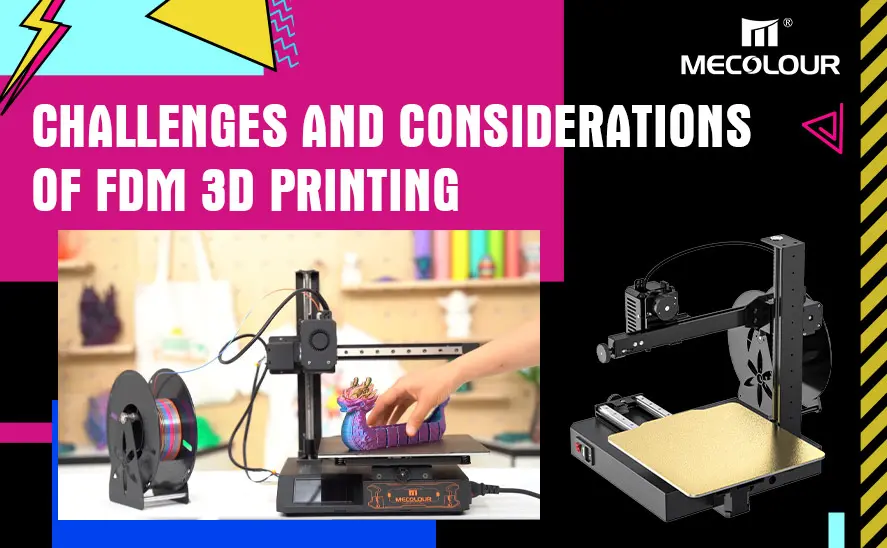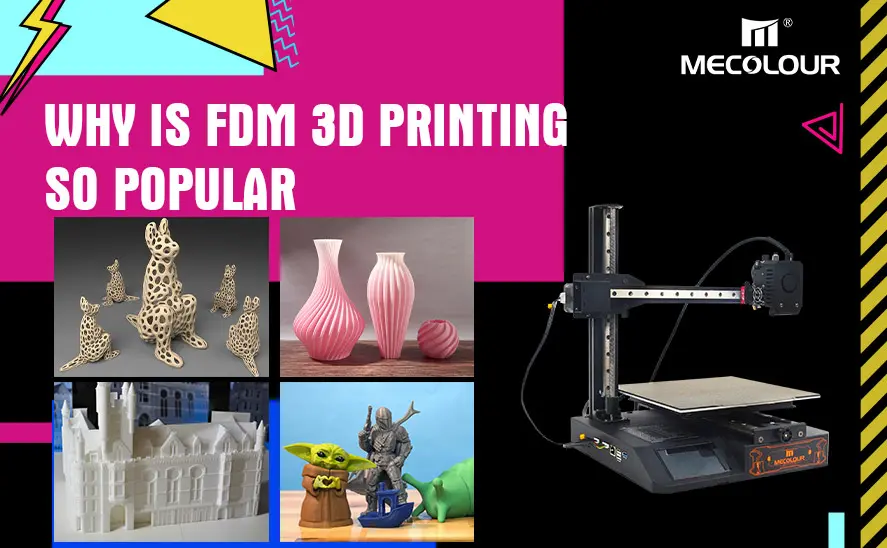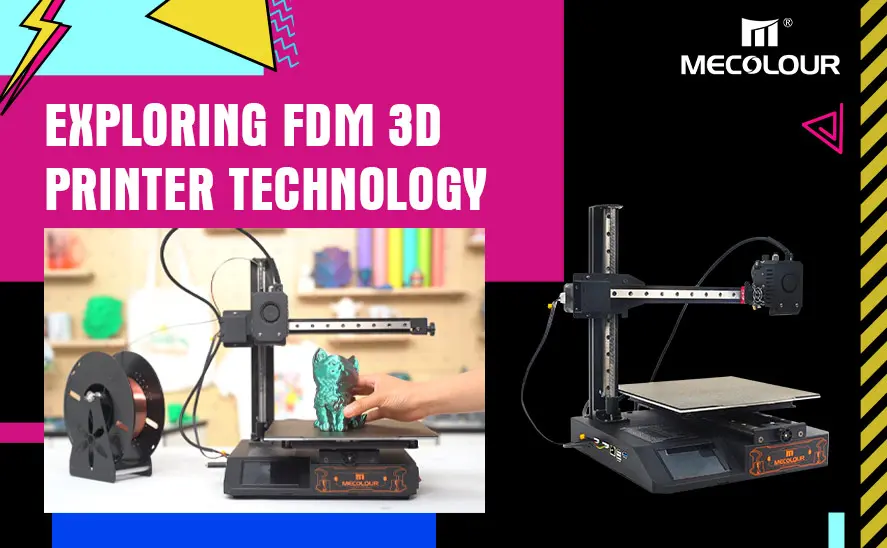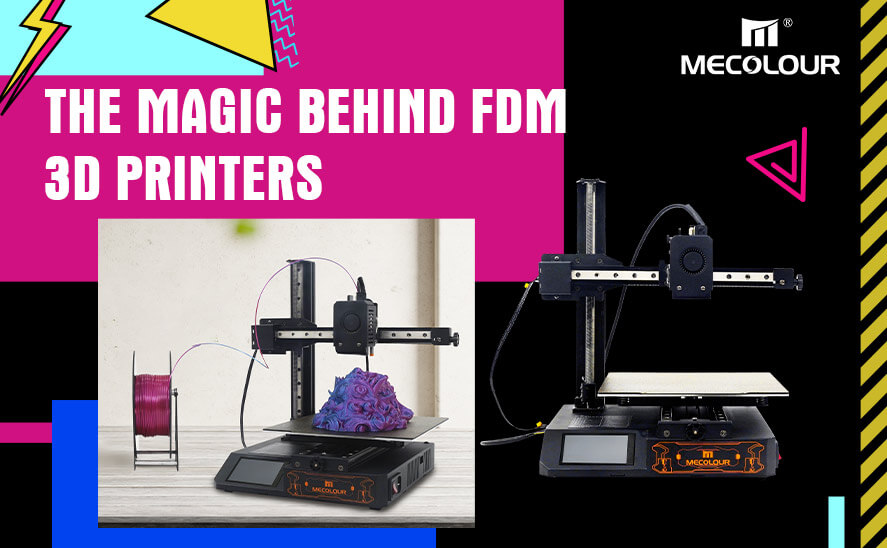
Blog
What materials can be used with FDM 3D printers?
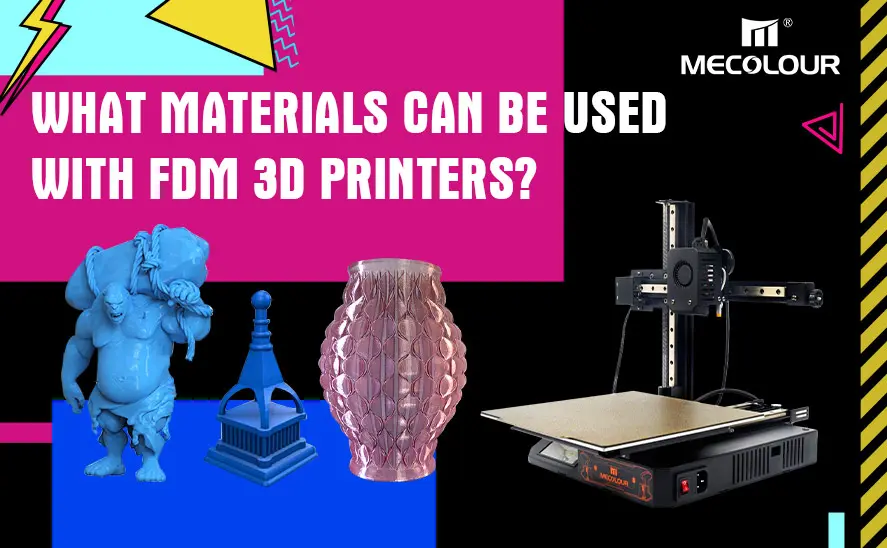
In the world of 3D printing, choosing the right material can make all the difference in your project. FDM (Fused Deposition Modeling) 3D printers, one of the most popular types on the market, are compatible with a range of versatile materials, each offering distinct properties. So, what materials can be used with FDM 3D printers? Whether you’re printing a functional part, a decorative piece, or a prototype, understanding the characteristics of each material can help you make the best choice. Let’s jump into our comprehensive guide on FDM 3D printing materials and find out which one suits your project best!
FDM 3D Printing Materials
FDM 3D printers work by extruding melted filament through a nozzle, layer by layer, to create an object. Here’s a breakdown of the most popular FDM 3D printing materials you’ll encounter:
1. PLA (Polylactic Acid)
PLA is probably the most well-known material used in FDM 3D printing. It’s popular for several reasons:
Easy to print: PLA has a low melting point, meaning it doesn’t require high temperatures.
Eco-friendly: Made from renewable resources like cornstarch, PLA is biodegradable.
Affordable: It’s widely available and budget-friendly.
But it’s not without its flaws. PLA isn’t as durable as other materials and may degrade over time, especially when exposed to heat. So, if your project needs to endure a tough environment, consider other options.
2. ABS (Acrylonitrile Butadiene Styrene)
ABS is known for its strength and durability, making it a favorite for functional 3D prints:
Strength: ABS can withstand impact and wear.
Temperature Resistance: It performs well under high temperatures, unlike PLA.
Flexibility: It has a bit of flex, allowing it to bend slightly without breaking.
However, ABS requires a heated bed and can emit fumes, so proper ventilation is essential. It’s commonly used in automotive parts, toys, and prototypes.
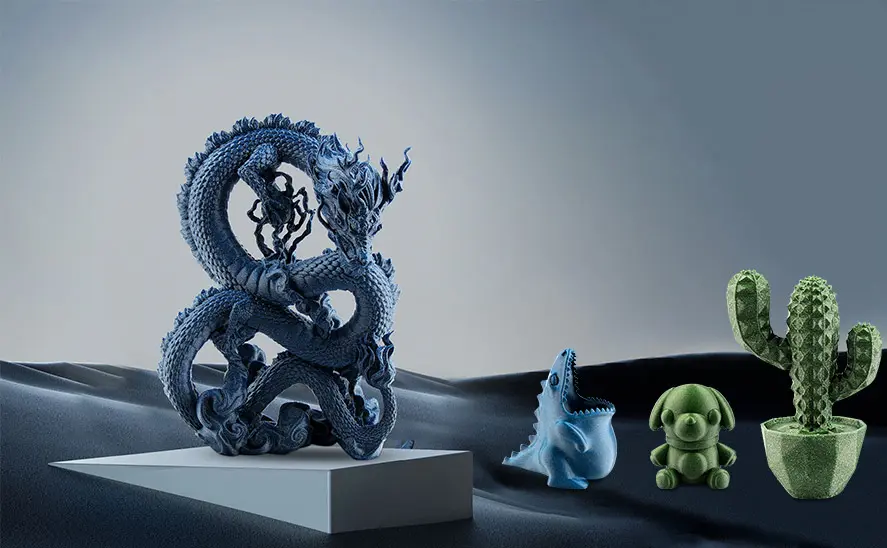
FDM 3D Printing Materials
3. PETG (Polyethylene Terephthalate Glycol)
PETG combines the best of both worlds—strength and ease of use:
Durable and Flexible: PETG is strong but also provides a bit of flexibility.
Food-safe (in many cases): Some PETG filaments are certified food-safe.
Resistant to Moisture: PETG is an excellent choice for outdoor or moist environments.
PETG can be a bit tricky to dial in, with a tendency to string during printing. It’s a great material for objects that need both durability and some flexibility.
4. TPU (Thermoplastic Polyurethane)
If you need something flexible, TPU is the way to go:
Elasticity: TPU’s flexibility makes it perfect for items like phone cases and footwear.
Shock Absorption: It absorbs impact, making it ideal for protective parts.
Durable: TPU holds up well under strain and bending.
However, TPU’s flexibility can be challenging, especially for beginners, as it requires a slower printing speed and adjustments to the nozzle temperature.
5. Nylon
Nylon is a powerhouse for heavy-duty applications:
Incredible Strength: Nylon offers superior durability and flexibility.
Low Friction: It’s great for parts that need to move or slide.
Chemical Resistance: Nylon is resistant to oils, chemicals, and abrasion.
Nylon, however, absorbs moisture quickly, so storing it in a dry environment is essential. It’s used in gears, functional parts, and tools due to its toughness.
6. HIPS (High Impact Polystyrene)
HIPS is often used as a support material in dual-extrusion printers, especially for complex structures:
Dissolvable Support: HIPS dissolves in a solution called Limonene, making it perfect for intricate prints.
Strength and Stability: It’s durable, so it can be used alone or as support material.
When paired with ABS, HIPS offers great versatility in creating complex prints that require support structures.
7. PEEK (Polyether Ether Ketone)
PEEK is one of the most advanced FDM 3D printing materials available, known for its exceptional mechanical properties:
High-Temperature Resistance: It can withstand extreme temperatures.
Superior Strength: PEEK rivals some metals in terms of strength.
Chemical Resistance: Ideal for harsh chemical environments.
PEEK is costly and requires a specialized printer, but it’s used in aerospace, medical, and engineering applications where performance is crucial.
How to use mecolour 3d printer to personalized halloween decorative items?
Comparing FDM 3D Printing Materials: Which One to Choose?
To make your decision easier, here’s a quick comparison of the major FDM 3D printing materials based on strength, flexibility, and temperature resistance.
| Material | Strength | Flexibility | Temperature Resistance | Ease of Printing |
| PLA | Moderate | Low | Low | Easy |
| ABS | High | Moderate | High | Moderate |
| PETG | High | Moderate | Moderate | Moderate |
| TPU | Low | High | Low | Challenging |
| Nylon | Very High | Moderate | High | Difficult |
| HIPS | Moderate | Low | Low | Moderate |
| PEEK | Very High | Moderate | Very High | Very Challenging |
Tips for Choosing the Right Material
When deciding which FDM 3D printing material to use, ask yourself these questions:
1.What‘s the purpose of my project? For decorative items, PLA might be enough, but for functional parts, consider ABS or Nylon.
2.Do I need flexibility? If yes, TPU is your best friend.
3.Will the part face harsh environments? If it will, PETG, ABS, or even PEEK might be necessary.
Quick Tips
Use PLA for simplicity and affordability.
Choose ABS for high strength and temperature tolerance.
Try TPU if you need flexibility and shock absorption.
Consider Nylon for high-strength applications.
Only opt for PEEK if you need premium performance and have access to advanced printing equipment.
Choosing the right material for FDM 3D printing can be overwhelming, but with a bit of research and consideration, you’ll find the perfect match for your project. From PLA’s simplicity to PEEK’s high-performance capabilities, FDM 3D printers offer a world of possibilities for creators, engineers, and hobbyists alike.
Related:
Exploring FDM 3D Printer Technology
Advantages of FDM 3D Printing, Do You Know?
Why is FDM 3D printing so popular?


